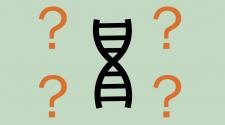CGS-authored

A new generation of genetic engineering techniques, collectively known as "gene editing," is being hailed as a game-changer in the life sciences. The highest-profile of the new methods, CRISPR, was developed just a few years ago and has already attracted hundreds of millions of dollars in biotech investments, sparked a round of patent wars and prompted predictions about a Nobel Prize.
Gene editing is one of those "dual use" technologies: It enables both novel approaches to basic biological research, and the literal redesign of life forms, ecosystems and even societies. Some of its proposed uses may be beneficial, but others would likely trigger far-reaching negative consequences.
That's especially true when it comes to "editing" human genes.
Targeting dysfunctional DNA in the tissues of individual consenting patients would be a form of medical treatment, albeit one that needs to be very carefully studied, tested and considered in light of its eventual affordability and accessibility. Experiments using older genetic modification methods were largely unsuccessful and sometimes tragic, with some deaths in clinical trials. Recent developments, including CRISPR, which is cheaper, more efficient...



